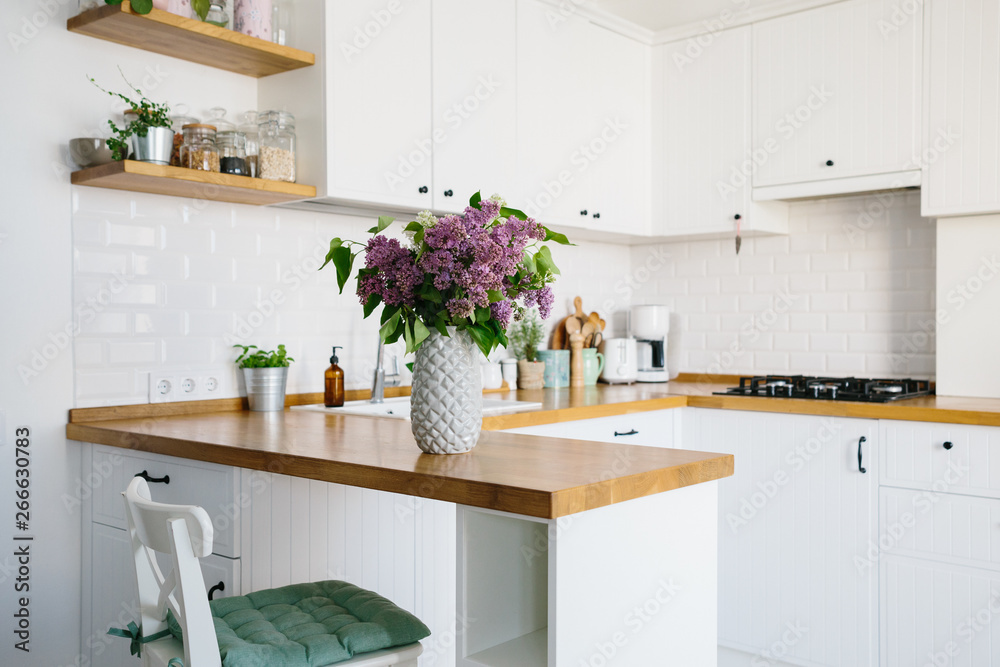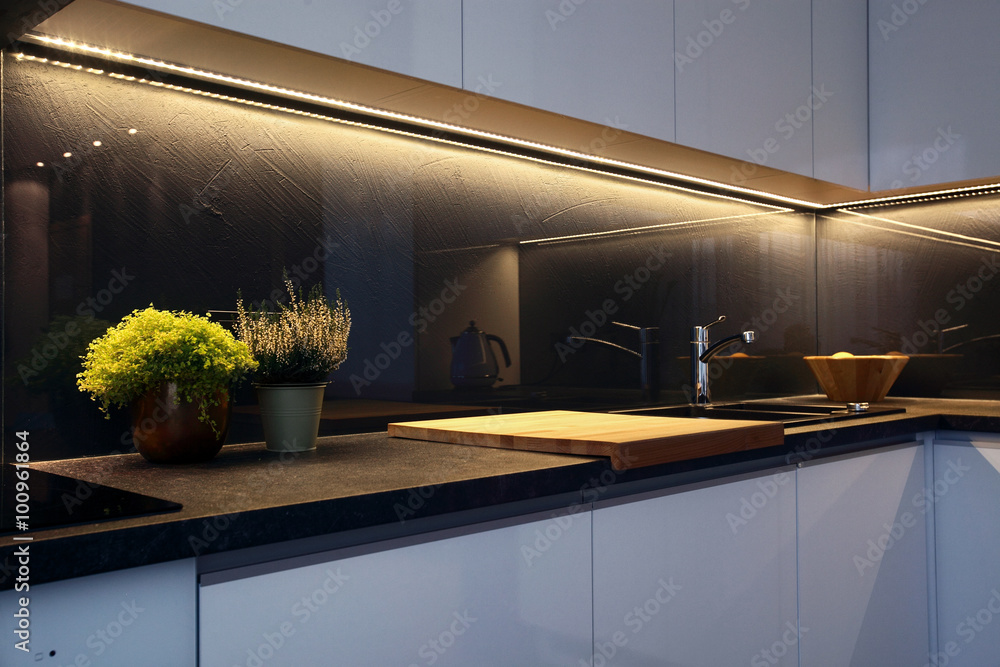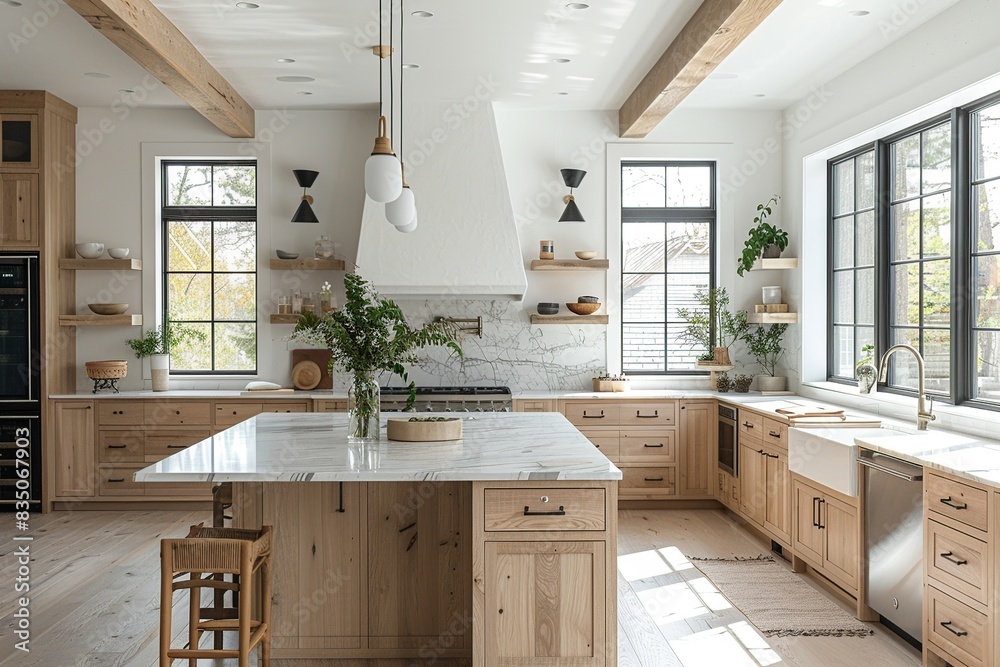1. Safety First: Childproofing Your Kitchen
Safety is paramount in a family-friendly kitchen. Childproofing your kitchen can prevent accidents and ensure that it is a secure place for children to explore and learn. Here are some essential childproofing tips:
Cabinet Locks and Latches:- Tip: Install safety locks and latches on lower cabinets and drawers to keep children from accessing hazardous items such as knives, cleaning supplies, and small appliances.
- Why It’s Important: Preventing access to dangerous items reduces the risk of accidental injuries and poisoning.
- Tip: Use stove knob covers to prevent children from turning on burners. Install an oven lock to keep little hands away from hot surfaces.
- Why It’s Important: Protecting children from hot surfaces and flames can prevent burns and kitchen fires.
- Tip: Apply corner guards and edge bumpers to sharp edges of countertops, tables, and cabinets to cushion any accidental bumps or falls.
- Why It’s Important: Softening sharp edges can prevent serious injuries from falls or collisions.
- Tip: Place safety covers on all electrical outlets, especially those near countertops where small appliances are plugged in.
- Why It’s Important: Outlet covers prevent children from inserting objects into electrical outlets, reducing the risk of electric shock.
- Tip: Use non-slip rugs and mats in areas prone to spills, such as near the sink and stove, to prevent slipping.
- Why It’s Important: Non-slip surfaces reduce the risk of falls, keeping the kitchen safe for children and adults alike.
2. Designing for Functionality and Ease of Use
A family-friendly kitchen should be designed for functionality and ease of use, accommodating the needs of all family members. Consider these design tips to create a practical and efficient kitchen:
Ample Storage Solutions:- Tip: Incorporate a variety of storage options, including deep drawers, pull-out shelves, and pantry organizers, to keep kitchen items organized and easily accessible.
- Why It’s Important: Efficient storage solutions help keep the kitchen clutter-free, making it easier to find and access items.
- Tip: Designate specific areas of the kitchen for children, such as a lower cabinet for their dishes and utensils or a small workspace where they can help with meal preparation.
- Why It’s Important: Creating kid-friendly zones encourages children to participate in kitchen activities while keeping them away from potential hazards.
- Tip: Consider incorporating a lower counter section or a step stool to make countertops more accessible to children and family members with mobility challenges.
- Why It’s Important: Accessible counters allow everyone to comfortably participate in cooking and meal preparation.
- Tip: Choose durable materials for countertops, flooring, and cabinetry that can withstand heavy use and are easy to clean, such as quartz, tile, and laminate.
- Why It’s Important: Durable, easy-to-clean surfaces simplify maintenance and keep the kitchen looking neat and tidy.
- Tip: Design an open kitchen layout with clear pathways to allow for easy movement and prevent congestion, especially during busy times.
- Why It’s Important: An open layout enhances safety and functionality, allowing family members to move freely and comfortably.
Join HICP Homeowner’s Alliance
Connect with experts, get special discounts and enjoy member benefits
3. Incorporating Family-Friendly Features
Adding family-friendly features to your kitchen can enhance its functionality and make it a more enjoyable space for everyone. Consider these features to create a welcoming and practical kitchen:
Breakfast Nook or Dining Area:- Tip: Create a cozy breakfast nook or dining area within the kitchen where family members can gather for meals and conversation.
- Why It’s Important: A dedicated dining space fosters family bonding and makes it convenient to enjoy meals together.
- Tip: Install a kitchen island with additional storage, seating, and workspace to accommodate various activities, such as cooking, homework, and crafts.
- Why It’s Important: A multi-functional island provides a versatile space for different family activities, making the kitchen the hub of the home.
- Tip: Choose appliances with user-friendly features, such as intuitive controls, child safety locks, and easy-to-read displays, to ensure everyone can use them safely.
- Why It’s Important: User-friendly appliances make it easier for all family members to participate in cooking and kitchen tasks.
- Tip: Set up a message center with a bulletin board, chalkboard, or whiteboard for family notes, schedules, and grocery lists.
- Why It’s Important: A message center helps keep the family organized and informed, facilitating communication and planning.
- Tip: Incorporate built-in recycling and waste stations to encourage responsible waste management and keep the kitchen tidy.
- Why It’s Important: Convenient waste stations promote eco-friendly habits and simplify kitchen cleanup.
4. Promoting Healthy Habits
A family-friendly kitchen should promote healthy habits and make it easy to prepare nutritious meals. Consider these tips to create a kitchen that supports a healthy lifestyle:
Organized Pantry:- Tip: Keep the pantry well-organized with clear containers, labels, and dedicated sections for different food items to make healthy choices easily accessible.
- Why It’s Important: An organized pantry encourages healthy eating by making it easy to find and select nutritious foods.
- Tip: Use attractive bowls or baskets to display fresh fruits and vegetables on the counter, making them readily available for snacking.
- Why It’s Important: Visible displays of fresh produce encourage family members to choose healthy snacks over processed options.
- Tip: Equip the kitchen with tools and gadgets that facilitate healthy cooking, such as steamer baskets, air fryers, and blenders.
- Why It’s Important: Having the right tools on hand makes it easier to prepare nutritious meals and adopt healthier cooking methods.
- Tip: Set up a water station with a water filter or dispenser to promote hydration and reduce the consumption of sugary drinks.
- Why It’s Important: Encouraging regular water intake supports overall health and reduces the reliance on unhealthy beverages.
- Tip: Keep cookbooks, nutrition guides, and meal planning resources in the kitchen to inspire healthy cooking and meal preparation.
- Why It’s Important: Providing educational resources empowers family members to make informed food choices and develop healthy eating habits.
5. Fostering a Positive Kitchen Environment
Creating a positive kitchen environment involves more than just safety and functionality; it’s about making the kitchen a welcoming and enjoyable space for the entire family. Consider these tips to foster a positive atmosphere:
Personal Touches:- Tip: Add personal touches to the kitchen, such as family photos, artwork, and decorative items that reflect your family’s personality and style.
- Why It’s Important: Personalizing the kitchen creates a warm and inviting space that feels uniquely yours.
- Tip: Incorporate music and entertainment options, such as a Bluetooth speaker or a small TV, to make kitchen activities more enjoyable.
- Why It’s Important: Music and entertainment can enhance the cooking experience and make the kitchen a fun place to be.
- Tip: Provide comfortable seating options, such as cushioned chairs or barstools, to encourage family members to spend time in the kitchen.
- Why It’s Important: Comfortable seating invites family members to relax and engage in conversation, making the kitchen a social hub.
- Tip: Involve the whole family in kitchen activities, from meal planning and cooking to cleaning and organizing. Assign age-appropriate tasks to children to teach them valuable life skills.
- Why It’s Important: Family involvement fosters teamwork, responsibility, and a sense of ownership in maintaining a clean and functional kitchen.
- Tip: Use the kitchen as a space to celebrate special occasions, such as birthdays, holidays, and family milestones, with cooking and baking activities.
- Why It’s Important: Celebrating together in the kitchen creates cherished memories and strengthens family bonds.








